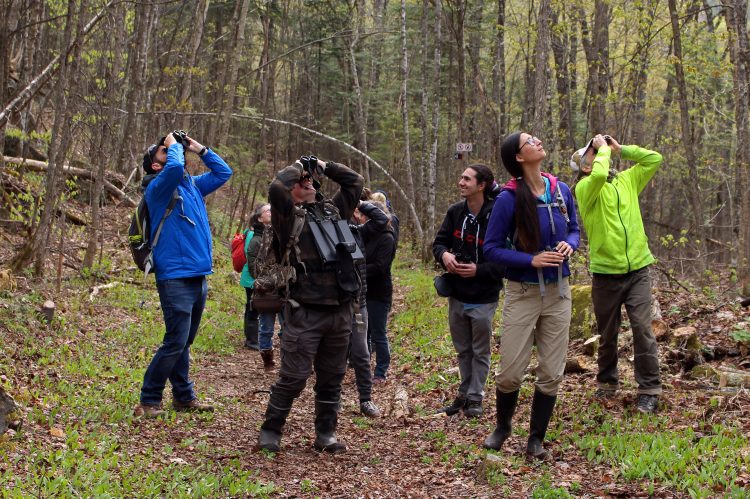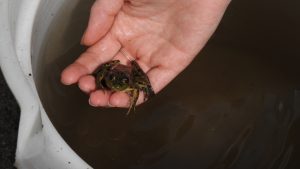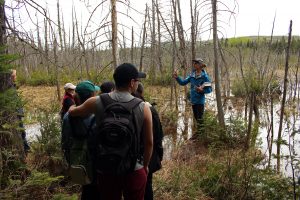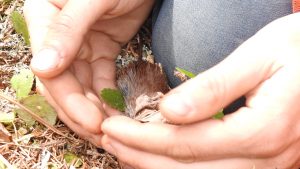RJANP’s first RuisseauBlitz was held on Saturday, May 19, 2018, in Morin-Heights. The event was part of Journées de la nature 2018 (website in French only). Over the course of the day, some 30 people took part in a program designed by the activity’s coordinator, biologist Mathieu Madison (Gestion Environnement MM), with whom RJANP has been collaborating for the last few years. Check out the photos on our Facebook page.
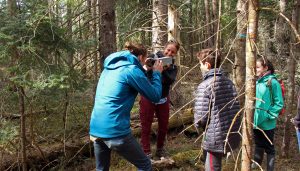
At the end of the day, Martin Gauthier, vice president of RJANP, thanked our partners, who made this first edition of the RuisseauBlitz possible, informative and enjoyable, including the Regroupement national des conseils régionaux de l’environnement du Québec; the Association des Biologistes du Québec, Comité régional des Laurentides; the Organisme de bassin versant de la rivière du Nord (Abrinord); Éco-corridors laurentiens; the MRC des Pays-d’en-Haut; the MRC d’Argenteuil; the three municipalities in the Ruisseau Jackson area: Morin-Heights, Saint-Sauveur and Mille-Isles; the Station de biologie des Laurentides, Développement ornithologique Argenteuil, Vanier College, Lac Écho, and the Marché Fermier de Morin-Heights. (The websites are in French only, but the Facebook pages are bilingual.)
The participants helped our scientists inventory birds, plants, reptiles and amphibians, and their efforts will inform decisions regarding conservation. Clearly, this was an ideal activity for nature lovers!
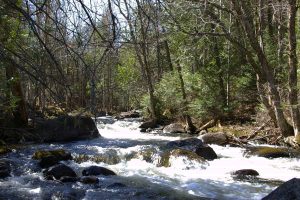
According to Simon Parent, RJANP’s treasurer, “the event was a resounding success, but future editions may be quite different, depending on the needs of the organization’s members and those of the public, who stand to gain a better understanding and appreciation of the environment by spending a day in the forest, rather than staring at their cell phones. Best of all, they can disconnect and enjoy the health benefits from just being outdoors.”
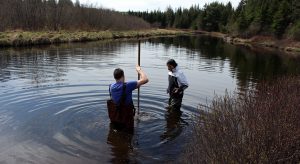
As the day drew to a close, Mathieu Régnier, president of RJANP, announced that the organization would soon launch a survey to determine RJANP’s emblematic bird. Three avian candidates identified at the RuisseauBlitz will be proposed to RJANP members and friends over the summer in collaboration with Développement ornithologique Argenteuil (website in French only). Stay tuned – the announcement will be made at the next RJANP meeting.
The following professionals made the activities of the RuisseauBlitz of May 19, 2018, possible:
- Ornithology: Martin Picard (Développement Ornithologie Argenteuil) and Christopher Cloutier (Vanier College, Environmental and Wildlife Management);
- Small mammals: Brandee Diner (Vanier College, Environmental and Wildlife Management);
- Benthic invertebrates: Charles Charrier Tremblay and Stéphanie Shousha (Station de biologie des Laurentides, Université de Montréal);
- Herpetofauna: Daphnée Lecours Tessier (Station de biologie des Laurentides, Université de Montréal);
- Lecture/workshop on the connectivity between protected natural areas: Kim Marineau (Éco-corridors laurentiens);
- Botany and plant community: Mathieu Madison (Gestion Environnement MM).
We also had seven students from the Environmental and Wildlife Management program at Vanier College.
Highlights
- The ornithology activity led to the identification of 51 bird species, although some people claimed there were 52.
- The small mammals were captured in 19 Sherman traps in four spots perpendicular to the trail near chemin Wood. The traps were placed on the evening of May 18 and the specimens were identified on the morning of May 19. However, since it was very early in the season, we didn’t see very many species of these small mammals. We captured only four specimens:
- 2 red squirrels
- 1 woodland vole
- 1 red-backed vole
- We had seen other common small mammals while characterizing the area, including deer mice, white-footed mice, woodland jumping mice, masked shrews and chipmunks.
- As for the benthic invertebrates, we discussed the importance of these species as indicators of the quality and condition of the aquatic environment.
- The herpetofauna activity took place on the edges of chemin Wood and the Ruisseau Jackson shoreline. We saw and/or heard wood frogs, green frogs, northern leopard frogs and spring peepers.
- The pickerel frog, a species likely to be designated as threatened or vulnerable, had been observed in the past while we were characterizing the Ruisseau Jackson area.
- The botany activity was an expedition through a variety of natural environments near Ruisseau Jackson: i) A sugar maple–yellow birch stand;
ii) A forest of white birch and regenerating fir;
iii) A marsh affected by varying water levels caused by a beaver dam;
iv) A coniferous forest dominated by eastern white-cedar and eastern hemlock. - Each natural environment offered a variety of plants that are typical of our local botanical communities. We saw interesting species in each environment and some of the visitors got to taste some surprising plants.

